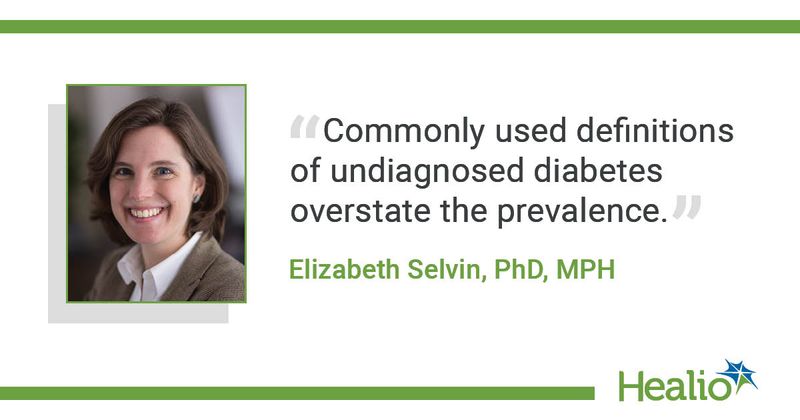Prevalence of undiagnosed diabetes falls during 3-decade period
From 1988 to 2020, cases of undiagnosed diabetes declined markedly, which suggested major improvements in diabetes screening and detection, according to researchers.
“Commonly used definitions of undiagnosed diabetes overstate the prevalence. When confirmatory definitions are used, the prevalence of undiagnosed diabetes is lower,” Elizabeth Selvin, PhD, MPH, professor at the Johns Hopkins Bloomberg School of Public Health, told Healio. “Confirmatory definitions require two elevated blood tests instead of just one, consistent with how diabetes is diagnosed in clinical practice.”

Selvin and colleagues aimed to update undiagnosed diabetes trends with definitions consistent with clinical practice. The study included data from 30,492 adults (aged 20 years) from the National Health and Nutrition Examination Survey from 1988 to 2020.
In the cohort without diagnosed diabetes, researchers defined confirmed undiagnosed diabetes as both elevated fasting plasma glucose ( 126 mg/dL) and elevated HbA1c ( 6.5%); persistent undiagnosed diabetes was defined as either elevated HbA1c or FPG.
From 1988-1994 to 2017-2020, the total diabetes prevalence rose from 6.8% to 14.2%, which was driven, according to researchers, by increasing cases of diagnosed diabetes.
Meanwhile, during that same time range, the prevalence of persistent undiagnosed diabetes was stable — 2.23% to 2.53% — as was confirmed undiagnosed diabetes — 1.1% to 1.23%. As a result, undiagnosed cases fell from 32.8% to 17.8% for persistent undiagnosed diabetes and from 19.3% to 9.5% for confirmed undiagnosed diabetes.
Furthermore, populations of patients with more prevalent undiagnosed diabetes were older adults, adults with obesity, racial/ethnic minorities and those without health care access. Among those with diabetes, researchers observed the highest proportion of undiagnosed cases among Asian American adults and those without health care access.
“Our study suggests that most cases of diabetes — up to 90% — are diagnosed,” Selvin said. “The good news is physicians are doing an excellent job with screening and diagnosis of diabetes in the U.S.”
However, Selvin said, there are pockets of the population in which a better job of screening for diabetes is needed.
“There remains a high prevalence of undiagnosed diabetes in young adults — especially those who are overweight or obese, persons who lack health insurance, and racial and ethnic minority populations, including Mexican Americans, African Americans and Asian Americans,” she said.
